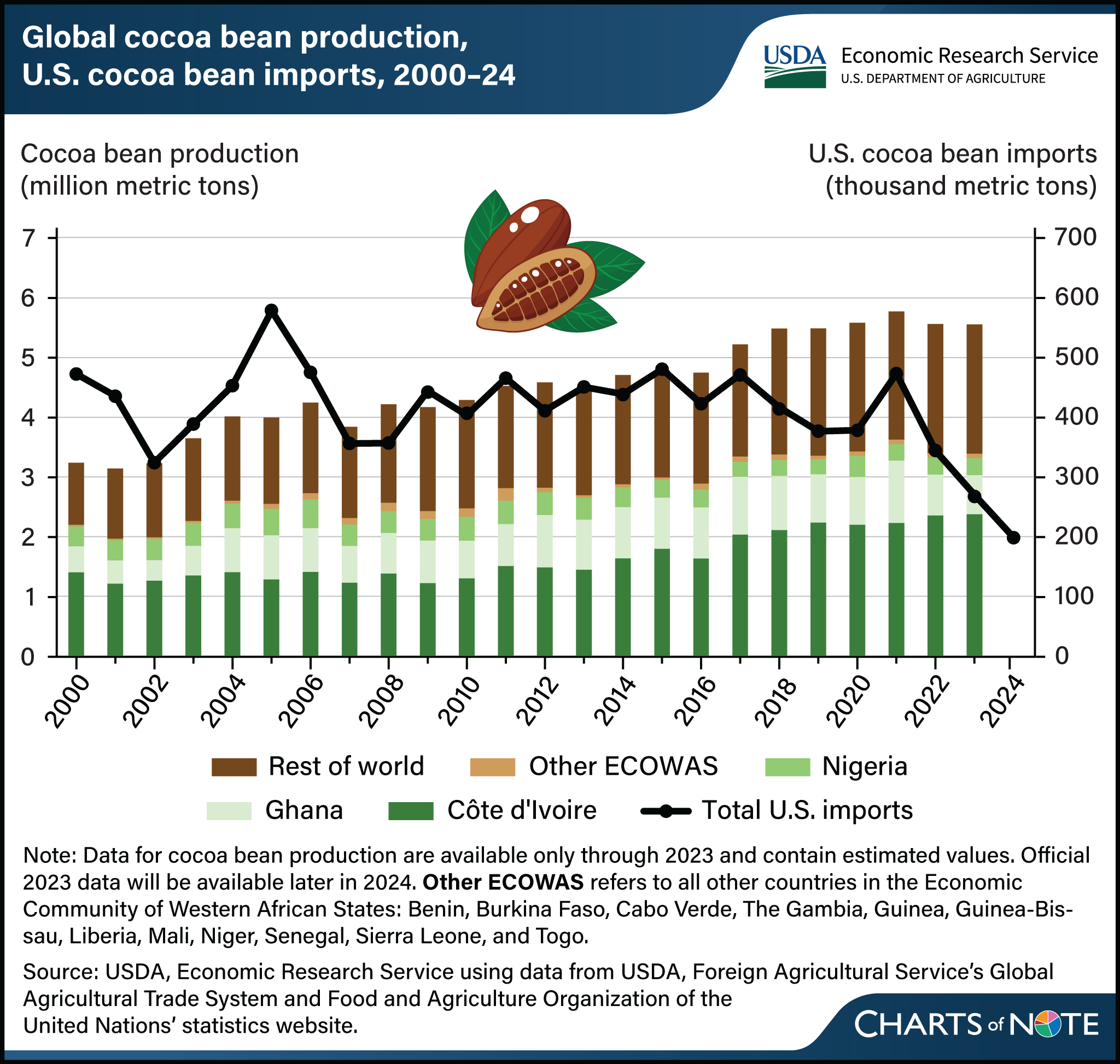High cocoa prices on smaller global crops lead to decreased U.S. imports in 2023 and 2024
- by Adam Gerval
- 2/13/2025

From 2000 to 2023, roughly two-thirds of U.S. imports of cocoa beans came from a few West African countries. Major cocoa suppliers, including Côte d’Ivoire and Ghana, as well as relatively minor suppliers like Nigeria, Sierra Leone, and Togo, combined to produce 61 percent of the world’s cocoa beans in 2023. These countries’ tropical climates, with consistent temperature and rainfall patterns, are ideal for cocoa cultivation. While official data for the 2023 harvest are expected later this year, reports suggest it was smaller than the estimated data indicate, with the 2024 crop shrinking further. These consecutively declining harvests led to a 310-percent increase in the global price of cocoa beans, peaking at an all-time high of $10,412 per metric ton in December 2024. As prices began to surge, U.S. cocoa bean imports began to decline. Volumes decreased by 22 percent in 2023, and another 26 percent in 2024. From 2000 to 2022, the United States imported about 425,000 metric tons of cocoa annually, mostly from West African countries. By 2024, the volume had fallen by more than half to 198,000 metric tons. The dramatic increase in cocoa prices has led U.S. confectioners to reduce the size of candy products and to feature a larger variety of other flavors during the major chocolate-sale seasons, such as Halloween, Valentine’s Day, and Easter. For more information about U.S. cocoa imports, see the USDA, Economic Research Service (ERS) Outlook for U.S. Agricultural Trade: November 2024. For more information about cocoa price volatility in West Africa, see ERS’s COVID-19 Working Paper: Single Commodity Export Dependence and the Impacts of COVID-19 in Sub-Saharan Africa, published in May 2022.

